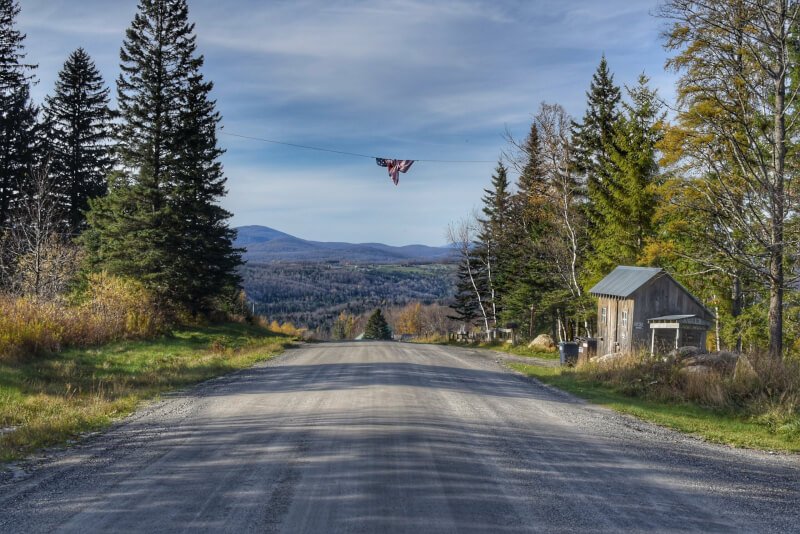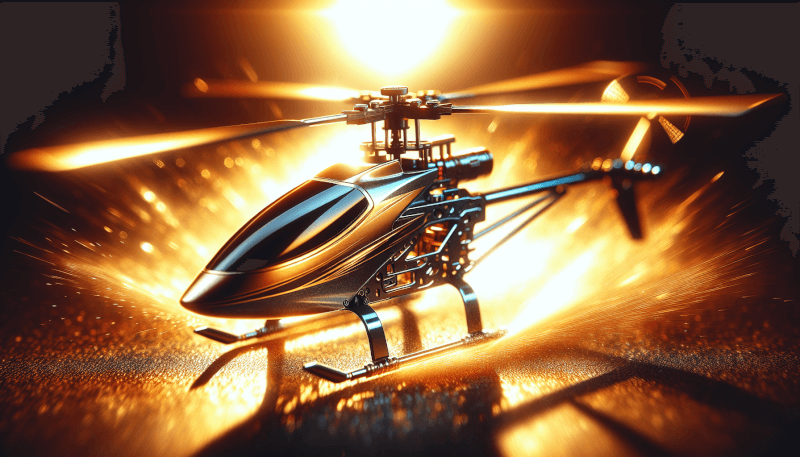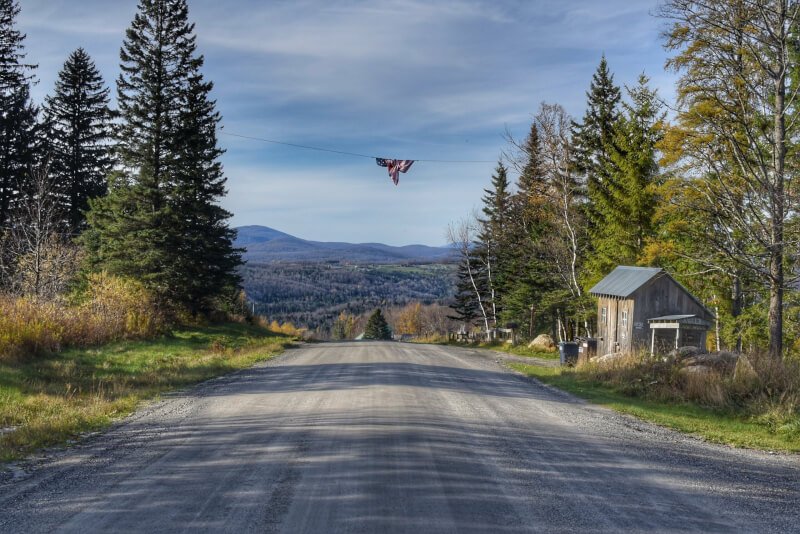Are you excited to take your first flight with a remote-controlled helicopter? If you’ve recently invested in a brand-new RC heli and can’t wait to get it up in the air, this beginner’s guide is perfect for you. We’ll provide you with some helpful tips and tricks to ensure a smooth and enjoyable first flight. From choosing the right helicopter to mastering the controls, we’ve got you covered. So, get ready to take off and let’s make your first RC heli experience a memorable one!

Choosing the Right RC Heli
When it comes to choosing the right RC heli, the first thing you need to consider is your skill level. If you are a beginner, it’s best to start with a simple and easy-to-fly RC heli. Look for models that are specifically designed for beginners, as they often have stability features and beginner-friendly controls.
Next, you will need to decide whether you want to go for a ready-to-fly (RTF) heli or a build-your-own kit. RTF helis are pre-assembled and ready to fly right out of the box, which makes them perfect for beginners. On the other hand, if you enjoy the thrill of building and customizing your own heli, a build-your-own kit might be the way to go.
Additionally, you should also consider the type of RC heli you want. There are different types available, such as coaxial, fixed-pitch, and collective-pitch helis. Coaxial helis are the easiest to fly and are great for beginners. Fixed-pitch helis offer more maneuverability and are suitable for intermediate pilots. Collective-pitch helis are the most advanced and require more skill to fly.
Lastly, consider the size of the heli. RC helis come in various sizes, ranging from micro-size to large-scale models. Smaller helis are generally more suitable for indoor flying and are easier to handle. Larger helis, on the other hand, offer more stability and are better suited for outdoor flying in larger open spaces.
Understanding the Basics of RC Helis
Before taking off with your RC heli, it’s important to understand the basics. Familiarize yourself with the different parts of an RC heli, including the main rotor blades, tail rotor, and landing gear. Understanding the function and operation of each part will help you troubleshoot any issues and perform routine maintenance.
Next, learn about the controls of an RC heli. Most RC helis use a transmitter to control their movement. The transmitter has sticks and switches that control the throttle, pitch, roll, and yaw of the heli. Take the time to understand how each control affects the movement of the heli, as this will be essential in mastering your flying skills.
The battery is another crucial aspect of your RC heli. Learn about the type of battery your heli uses and how to properly charge and handle it. Different helis have different battery life and charging requirements, so make sure to read the manufacturer’s instructions and follow proper safety precautions.
Lastly, familiarize yourself with the different flight modes of an RC heli. Beginners usually start off in “beginner” or “stability” mode, which limits the heli’s movements and provides more stability. As you progress, you can switch to “intermediate” or “advanced” mode, which allows for greater maneuverability but also requires more skill to control.

Preparing for Your First Flight
Getting ready for your first flight is an exciting step in your RC heli journey. The first thing you need to do is find a suitable flying location. Look for open areas, such as parks or fields, with minimal obstructions like trees or power lines. Having plenty of space to fly will give you more room to practice and maneuver your heli safely.
Check the weather conditions before heading out to fly. Avoid flying in strong winds or during rainstorms, as these conditions can make it difficult to control your heli and may lead to crashes. Choose a day with calm weather, ideally with little to no wind, for smooth and enjoyable flights.
Once you’ve found the perfect flying location and verified the weather conditions, it’s time to assemble your RC heli. Follow the manufacturer’s instructions to properly assemble the different parts, such as the main rotor blades, tail rotor, and landing gear. Take your time and double-check that everything is securely attached before taking off.
Before taking to the skies, it’s crucial to check the control settings on your heli. Ensure that the transmitter is properly synchronized with the heli and that all controls are functioning correctly. Verify that the throttle, pitch, roll, and yaw are responding as expected. This step is essential for a safe and controlled flight.
Mastering the Controls
Now that you have your RC heli ready, it’s time to start mastering the controls. Begin by making small adjustments to get a feel for how the heli responds. Incrementally increase the throttle and observe how the heli lifts off and hovers in the air. Practice maintaining a stable hover by making subtle adjustments to the controls.
Controlling the throttle is one of the fundamental skills to master when flying an RC heli. Learn to control the throttle smoothly, as abrupt throttle changes can destabilize the heli. Gradually increase and decrease the throttle to maintain a consistent altitude and to perform controlled ascents and descents.
As you gain confidence and experience, start practicing basic maneuvers such as forward and backward flight, left and right turns, and sideways movement. Take it slow at first and focus on mastering one maneuver at a time. With practice, you’ll develop better control and precision in performing these maneuvers.

Taking Off and Landing
Before taking off, it’s important to go through a pre-flight checklist. Make sure all parts are securely attached, check that the battery is fully charged, and verify that the control settings are correct. Taking a few minutes to go through this checklist will help prevent any issues during flight.
To start your heli’s motor, ensure that the throttle control is set to zero or the lowest setting. Switch on the transmitter and then turn on the heli’s power switch. Move the throttle stick slightly upwards until you hear the motor spin. Be careful not to give too much throttle, as the heli might lift off prematurely.
Lift off smoothly by gently increasing the throttle while making any necessary control adjustments to maintain a stable hover. Keep a steady hand on the controls and gradually increase the altitude. Avoid sudden movements or aggressive inputs, especially during takeoff, as this can lead to instability or crashes.
When it’s time to land your helicopter, reduce the throttle gradually and bring the heli down gently. Aim for a smooth and controlled descent, ensuring that the heli is level and aligned with the landing area. Avoid dropping the heli from a significant height, as this can damage the heli and increase the risk of crashes.
Dealing with Crashes and Repairs
Crashes are an inevitable part of learning to fly an RC heli, but it’s important not to get discouraged. After a crash, assess the damage to your heli. Look for any broken or damaged parts and identify any issues that need to be addressed. Assessing the damage will help you determine the necessary repairs.
For common issues like broken rotor blades or loose parts, you can learn how to repair them yourself. Many online resources provide step-by-step guides and tutorial videos for repairing RC helis. With a little patience and the right tools, you can often fix minor issues on your own and get back in the air quickly.
If you encounter more complex or extensive damage, it may be best to seek professional help. Local hobby shops or RC heli clubs often have experienced technicians who can assist with repairs. Don’t hesitate to reach out for assistance if you’re unsure about how to fix a specific problem or if you need expert advice on repairing your heli.
To prevent future crashes, it’s important to take precautions during your flights. Avoid flying in crowded areas or near people and animals to reduce the risk of collisions. Follow the manufacturer’s guidelines and recommendations for safe flying practices. Additionally, make sure to maintain your heli regularly, checking for loose parts and conducting routine maintenance to minimize the chances of crashes.

Flying Tips and Techniques
To improve your flying skills and become a proficient RC heli pilot, there are a few tips and techniques you can follow. Practice in calm weather conditions, as wind can make flying more challenging, especially for beginners. Choose a day with minimal wind to have better control over your heli.
Start with simple maneuvers and gradually increase the difficulty level as you gain more experience. Focus on mastering one skill at a time rather than trying to learn everything at once. By breaking down the learning process into smaller steps, you can build a strong foundation and gradually progress to more advanced maneuvers.
Consider joining a local RC heli club or community. This provides an opportunity to connect with fellow enthusiasts who can offer guidance, share tips, and provide support. You can learn from experienced pilots and participate in group flying sessions or competitions, further enhancing your skills and knowledge.
Safety Precautions
Ensuring safety is of utmost importance when flying RC helis. Always wear protective gear such as safety goggles or glasses to protect your eyes from debris or rotor blades. Additionally, wearing gloves can provide added protection and improve your grip on the controls.
Keep bystanders at a safe distance when flying your heli. Maintain a buffer zone around your flying area to prevent accidents or injuries. Avoid flying near people, animals, or vehicles to reduce the risk of collisions. Be mindful of your surroundings at all times and prioritize safety.
It’s crucial to follow local regulations and guidelines when flying your RC heli. Familiarize yourself with any restrictions or requirements imposed by your local authorities or relevant aviation organizations. Adhering to these regulations ensures the safety of yourself and others, and helps maintain a positive image for the RC heli community.

Troubleshooting Common Problems
Sometimes, you may encounter common problems while flying your RC heli. If your heli is not lifting off, double-check that the battery is fully charged and securely connected. Ensure that the rotor blades are spinning freely and not obstructed by any debris. Adjust the throttle and make sure the control settings are correct.
If you’re experiencing control response issues, check that the control linkages are properly adjusted and securely attached. Ensure that the transmitter batteries are fully charged and that you have a good signal connection. If necessary, recalibrate or re-bind the transmitter to the heli to resolve any connectivity problems.
Battery or power problems can arise, especially if you’ve been flying for an extended period. Keep track of your flight time and monitor the battery voltage. If the voltage drops too low, it can affect the performance of your heli or even lead to a sudden loss of power. Always carry spare batteries and make sure they are fully charged before each flight.
Loss of signal is a critical issue that requires immediate attention. If you experience a loss of signal between the transmitter and heli, the heli may go into “fail-safe” mode, which can lead to unexpected behavior or loss of control. If this occurs, try to regain control by moving closer to the heli or re-establishing the signal connection. If all else fails, safely bring the heli down and investigate the cause of the signal loss.
Maintenance and Care
To keep your RC heli in optimal condition, regular maintenance is essential. After each flight session, take the time to clean your heli. Use a soft brush or compressed air to remove any dust, dirt, or debris that may have accumulated on the heli’s exterior or in the rotor mechanisms. Keeping your heli clean will ensure smoother operation and extend its lifespan.
Inspect your heli for any loose or worn-out parts. Check that all screws, bolts, and connectors are securely tightened. Pay attention to the rotor blades, as they can become damaged or warped over time. Replace any worn-out or damaged components to maintain the heli’s performance and prevent potential issues during flight.
When not in use, store your heli properly to protect it from damage. Keep it in a cool and dry place, away from direct sunlight or extreme temperatures. If possible, store your heli in a dedicated heli case or bag to further protect it from dust, dirt, and accidental bumps.
Regularly check the state of your batteries. Inspect them for any signs of wear or damage, such as bulging or leaking. Replace any batteries that no longer hold a charge or show signs of deterioration. Proper battery care is crucial for maintaining the performance and longevity of your heli.
In conclusion, choosing the right RC heli, understanding the basics, preparing for your first flight, mastering the controls, and taking safety precautions are all important steps in becoming a successful RC heli pilot. By following these guidelines and practicing regularly, you can enjoy the thrill and excitement of flying RC helis while ensuring a safe and enjoyable experience.


